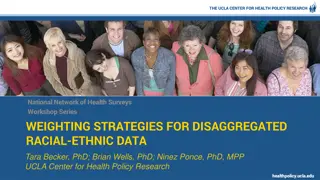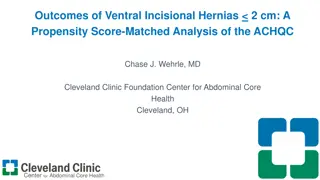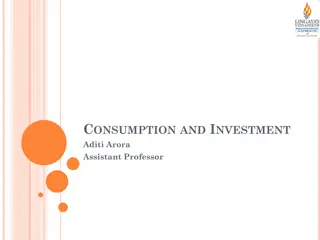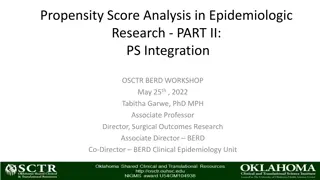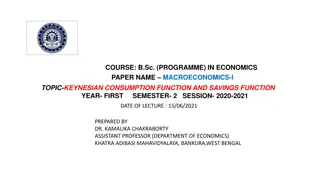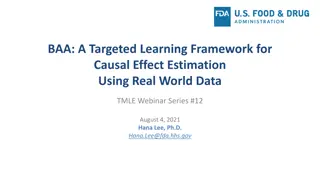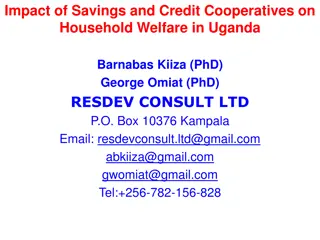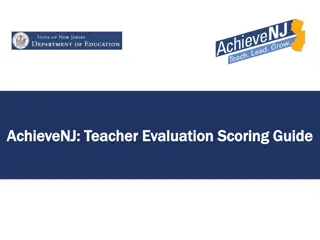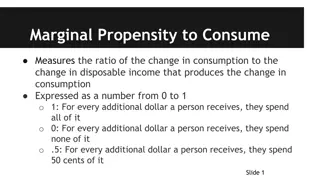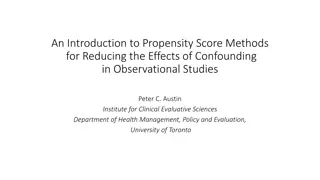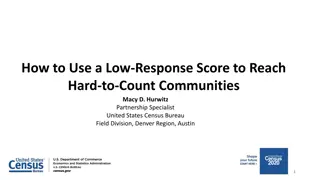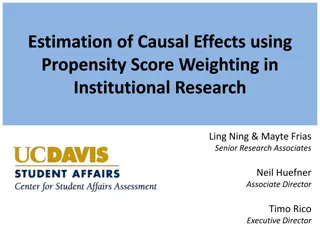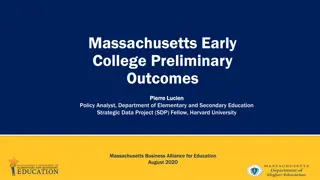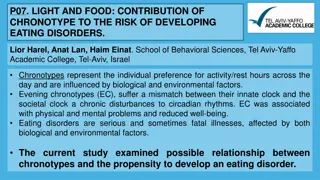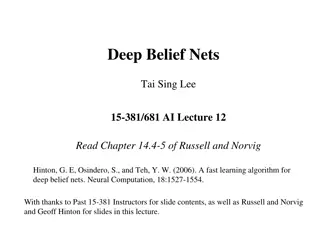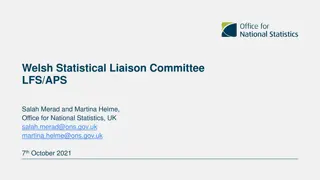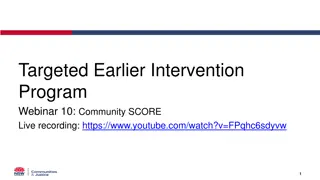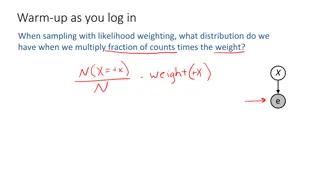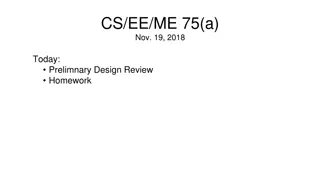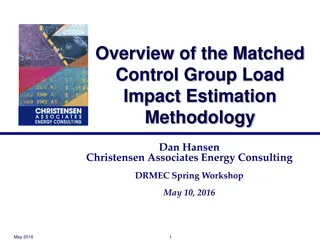ECC Social Value Reporting and Evaluation Framework
Essex County Council (ECC) has implemented a robust Social Value Reporting and Evaluation framework based on the Local Government Association's National TOMs method. This framework categorizes and assesses social value contributions in two parts - Value Score and Supporting Statement Score - to deri
3 views • 16 slides
Understanding Frequency Weighting in Noise Pollution Measurement
Frequency weighting is essential in noise pollution measurement to reflect how the human ear perceives noise. The A, C, and Z weightings are commonly used to represent different frequency responses. A-weighting covers the audible frequencies where the human ear is most sensitive, while C-weighting i
2 views • 7 slides
Understanding Weighting Strategies for Disaggregated Racial-Ethnic Data
Delve into the importance of weighting strategies for disaggregated racial-ethnic data in health policy research. Learn about the purpose of weighting, considerations, and when weights are unnecessary. Discover how survey weights ensure the representativeness and generalizability of data to target p
3 views • 56 slides
Outcomes of Ventral Incisional Hernias <2cm: A Propensity Score-Matched Analysis
This study presents outcomes of ventral incisional hernia repair <2cm using a propensity score-matched analysis. The research evaluates mesh versus primary repair methods and explores complications and recurrence rates. Insights from adult patients undergoing hernia repair from 2012-2021 are include
0 views • 18 slides
Understanding Consumption, Saving, and Investment in Economics
Consumption in macroeconomics refers to total spending on consumer goods and services, while saving is the act of abstaining from consumption. Investment involves creating capital goods and acquiring financial assets. Engle's Law states that the proportion spent on necessities decreases with income.
0 views • 13 slides
Psychological Theories of Criminality: Understanding the Roots
Psychological theories of criminality delve into the association between intelligence, personality, learning, and criminal behavior. Major theories include Psychodynamic Theory by Freud, Behavioral Theory by Bandura, and Cognitive Theory by Kohlberg. These theories explore how unconscious mental pro
1 views • 20 slides
Integration Approaches of Propensity Scores in Epidemiologic Research
Propensity scores play a crucial role in epidemiologic research by helping address confounding variables. They can be integrated into analysis in various ways, such as through regression adjustment, stratification, matching, and inverse probability of treatment weights. Each integration approach has
0 views • 20 slides
Understanding Keynesian Consumption and Savings Functions in Macroeconomics
Keynesian consumption function details the relationship between total consumption and gross national income. It emphasizes the stability of aggregate consumption and the marginal propensity to consume. Similarly, Keynesian savings function illustrates the link between savings and national income, hi
0 views • 6 slides
Targeted Learning Framework for Causal Effect Estimation Using Real World Data
Hana Lee, Ph.D., presents a webinar on the Targeted Learning Framework for Causal Effect Estimation using Real World Data (TMLE). The project aims to help the FDA develop a structured approach to incorporating real-world data into regulatory decision-making. TMLE offers a systematic roadmap aligned
0 views • 27 slides
Impact of Savings and Credit Cooperatives on Household Welfare in Uganda
Global poverty reduction is a key focus of Sustainable Development Goals, with financial inclusion playing a significant role. This study focuses on the impact of Savings and Credit Cooperative Organizations on member households in Uganda, evaluating access to services and their influence on househo
0 views • 20 slides
AchieveNJ Teacher Evaluation Scoring Guide Overview
This presentation details how districts assess teacher performance in AchieveNJ, outlining the weighting of evaluation elements and explaining the multiple measures used. It covers teacher practice scoring, components weighting, and provides examples for calculating final ratings. Local districts ha
0 views • 24 slides
Understanding Inverse Probability Weights in Epidemiological Analyses
In epidemiological analyses, inverse probability weights play a crucial role in addressing issues such as sampling, confounding, missingness, and censoring. By reshaping the data through up-weighting or down-weighting observations based on probabilities, biases can be mitigated effectively. Differen
0 views • 25 slides
Understanding Marginal Propensity to Consume and Save
Marginal Propensity to Consume (MPC) and Marginal Propensity to Save (MPS) measure the ratios of change in consumption and saving to change in disposable income respectively. The relationship between MPC and MPS shows that they equal 1 when combined, with the remainder being saved. The multiplier ef
7 views • 5 slides
Understanding Propensity Score Methods for Reducing Confounding in Studies
This content discusses the use of propensity score methods to address confounding in observational studies, comparing randomized control trials (RCTs) with observational studies, explaining the potential outcome framework, average treatment effects, and common assumptions made in these methods to re
0 views • 12 slides
Top 5 Ways to Improve Your CIBIL Score
In addition to determining whether you will be able to get a loan, your CIBIL score will determine how much interest you will pay. Your money depends on you taking care of it . If your score is high, some lenders may be more likely to lend you money.
11 views • 3 slides
Effective Score Marking Process for Music Study
Explore the comprehensive process of score marking for music study, covering essential components like musical, technical, historical needs, and the values associated with good literature. Learn about composer composition, graph analysis, and the importance of efficient score marking to enhance your
0 views • 13 slides
Understanding Keynesian Consumption and Savings Functions in Macroeconomics
Keynesian Consumption Function relates total consumption to national income, with stable characteristics like MPC and APC. Savings Function shows the relationship between savings and income, highlighting the Marginal Propensity to Save and Average Propensity to Save. Both functions are essential con
0 views • 6 slides
Comparing Bleeding and Mortality Risks of Dabigatran vs. Rivaroxaban in Elderly Medicare Beneficiaries
A study by DJ Graham et al. compared the risks of stroke, bleeding, and mortality in elderly Medicare beneficiaries with nonvalvular atrial fibrillation treated with dabigatran or rivaroxaban. The study included over 118,000 patients and found that dabigatran was associated with a lower risk of majo
0 views • 9 slides
GLMHC/SCORE Jail Program: Providing Services for City of Tacoma Residents
GLMHC/SCORE Jail Program offers court-ordered assessments and transition services for City of Tacoma residents sent to the SCORE jail. Learn about its background, the purpose of SCORE, mental health services provided, and the collaboration efforts to address gaps in service provision.
0 views • 21 slides
Exploring Entrepreneurial Activities in Extra-curricular Enterprise Programs at Plymouth University
Investigate the impact of extra-curricular enterprise activities on entrepreneurial capabilities, behaviors, and competencies, featuring insights from Dr. Emily Beaumont, Sarah Preedy, and Sarah Stevenson. The study delves into the development workshops and events like Social BETA Enterprise, FLUX T
0 views • 20 slides
Strategies for Reaching Hard-to-Count Communities Using Low-Response Score
Explore how to leverage a low-response score to engage with hard-to-count communities effectively. Learn about ROAM mapping tool, the 2020 Census goal, and the significance of Low Response Score (LRS) in identifying areas for targeted outreach. Discover hard-to-count variables and how to utilize dat
0 views • 14 slides
Estimation of Causal Effects using Propensity Score Weighting
Understanding causal effects through methods like propensity score weighting is crucial in institutional research. This approach helps in estimating the impact of various interventions, such as a writing program, by distinguishing causation from correlation. The use of propensity score matching aids
0 views • 22 slides
Preliminary Outcomes of Massachusetts Early College Program
Massachusetts Early College Program, launched in 2018, shows promising outcomes based on data analysis for the 2019 cohort. The program focuses on students of color and aims to bridge high school and college experiences. Data sources include SIMS, SCS, MCAS, NSC, and FAFSA. Methodology involves prop
0 views • 13 slides
Impact of Chronotype on Developing Eating Disorders
Chronotypes, representing individuals' morningness-eveningness preference, play a significant role in the propensity to develop eating disorders. Evening chronotypes, facing a mismatch between their internal clock and societal demands, have been linked to various health and mental health issues. A s
0 views • 5 slides
Understanding Information Retrieval Models and Processes
Delve into the world of information retrieval models with a focus on traditional approaches, main processes like indexing and retrieval, cases of one-term and multi-term queries, and the evolution of IR models from boolean to probabilistic and vector space models. Explore the concept of IR models, r
0 views • 65 slides
Introduction to Deep Belief Nets and Probabilistic Inference Methods
Explore the concepts of deep belief nets and probabilistic inference methods through lecture slides covering topics such as rejection sampling, likelihood weighting, posterior probability estimation, and the influence of evidence variables on sampling distributions. Understand how evidence affects t
0 views • 47 slides
Understanding SAT Math Score Percentiles
Learn how to determine your score percentile on the math section of the SAT by using a normal distribution curve to find where your score falls relative to other students. Discover the concept of percentiles and how they reflect your position in relation to the mean and standard deviations of the sc
0 views • 39 slides
Overview of LFS/APS Sample Design and Weighting Changes
The Welsh Statistical Liaison Committee discusses the sample design and weighting changes in the Labour Force Survey (LFS) and Annual Population Survey (APS) since the pandemic. It covers the impact on response rates, adjustments to reduce bias, and future developments. The LFS samples around 75,000
0 views • 39 slides
Heart Score for Improved Risk Stratification in Patients with Chest Pain
Heart Score is a valuable tool for stratifying patients with chest pain in the emergency setting, aiding in clinical decision-making. This algorithm helps differentiate causes of thoracic pain effectively, minimizing false negatives and reducing unnecessary hospital admissions. By assessing factors
0 views • 30 slides
Community SCORE - Outcomes Reporting Webinar
Explore the Community SCORE outcomes reporting tool in this insightful webinar. Learn how to effectively utilize Community SCORE for reporting client outcomes and satisfaction, benefiting individuals, groups, and communities. Discover the importance of measuring client outcomes and how it can enhanc
0 views • 30 slides
Understanding Likelihood Weighting in Sampling
When using likelihood weighting for sampling, multiplying the fraction of counts by the weight results in a specific distribution. Likelihood weighting may fail in scenarios with high complexities, prompting the need for alternative algorithms like resampling. This technique involves eliminating unf
0 views • 27 slides
Understanding the HEART Score for Risk Stratification in Patients with Chest Pain
The HEART score is a valuable tool for stratifying patients presenting with chest pain in the emergency department. It helps in distinguishing between low, intermediate, and high-risk individuals and guides further management decisions. By incorporating factors like history, ECG findings, age, risk
0 views • 30 slides
Insights into Worker Displacement and Income Inequality in Ireland
Exploring the impact of worker displacement, job flows, and income inequality in Ireland using job churn data from Ms. Nírín McCarthy, School of Economics, University College Cork. The study focuses on the effects of displacement on workers' earnings, employment earnings inequality, and job flows
0 views • 24 slides
Comparative Analysis of Methods for Estimating Overseas Travellers to Northern Ireland
This presentation delves into the methodologies employed by three surveys - Country of Residence Survey, Passenger Card Inquiry, and Survey of Overseas Travellers - to estimate the number of visitors to Northern Ireland through ports in the Republic of Ireland. By examining similarities and differen
0 views • 11 slides
Course Weighting Task Force Meeting May 11, 2017
The Course Weighting Task Force meeting held on May 11, 2017, aimed to study and potentially recommend changes to current course weighting practices within SBISD. The task force discussed members' familiarity with the system, concerns, interests, and potential impacts. The executive limitations of t
0 views • 15 slides
Systematic Design Evaluation and Optimization Methods
This content covers various structured design methods such as the V Model of Systems Engineering, Pugh Analysis, Weighted Objectives Method, and Ranking and Weighting Objectives. It also discusses the process of recognition, generation, evaluation, and optimization of design alternatives, along with
0 views • 15 slides
Understanding SDSU's Writing Placement Assessment (WPA)
SDSU's GWAR, an argument-based Writing Placement Assessment, requires students to write an essay analyzing a given argument. Scores range from 2-10, with different score bands dictating course requirements. Achieving a perfect score is subjective, emphasizing clear and concise argument analysis. Som
0 views • 35 slides
Advanced Applications of Monte Carlo Wind Probability Model in Hurricane Analysis
Update on the Year 1 Joint Hurricane Testbed Project, focusing on the Monte Carlo Wind Probability Model and its estimation of wind probabilities for different intensities. The model incorporates track and intensity error distributions, land proximity, and serial correlations to provide accurate for
0 views • 23 slides
Matched Control Group Load Impact Estimation Methodology Overview
A matched control group consists of customers similar to those in a treatment group but not subjected to the treatment. This methodology is useful when an experimentally designed control group is unavailable, there is a large pool of eligible control customers, or the treatment is not event-based. T
0 views • 12 slides
Understanding Term-weighting Functions for Similarity Measures
Explore term-weighting functions for similarity measures in information retrieval, focusing on TFIDF vectors, vector-based similarity measures, and the TWEAK learning framework for fine-tuning similarity metrics.
0 views • 22 slides


